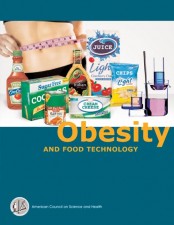 The use of food technology to solve public health problems has a long and impressive history.
The use of food technology to solve public health problems has a long and impressive history. The use of food technology to solve public health problems has a long and impressive history. Three important examples are the pasteurization of milk, the fortification of foods to prevent nutritional deficiencies, and the use of irradiation to enhance microbiological safety and to kill pests in foods.
The use of food technology to solve public health problems has a long and impressive history. Three important examples are the pasteurization of milk, the fortification of foods to prevent nutritional deficiencies, and the use of irradiation to enhance microbiological safety and to kill pests in foods.
Although innovations from food technology have contributed to the increased availability of abundant and tasty foods (that makes over consumption of food easier), the food industry is not the cause of obesity and its creativity may contribute to solving the obesity problem.
In conjunction with dietary change, increased physical activity, behavioral changes, and education, food technology can contribute in the fight against obesity by providing consumers with an increased variety of tasty, appealing foods that are lower in energy density and/or portion size than standard products.
Technological innovations that may be used in the creation of lower-energy-density and/or controlled-portion-size products include sugar substitutes, fat replacers, addition of fiber, use of chemical additives produced by biotechnology, new production methods, and different food packaging strategies. Designing foods that promote satiety or suppress appetite are active areas of research. For example, insulin-type fructans, added to foods, have been shown to affect blood levels of appetite signaling hormones thereby helping to suppress appetite. Some novel fat emulsions and types of dietary fiber induce a feeling of fullness and may reduce food consumption.
Many food products with reduced energy density or controlled portion size are already being marketed successfully. Whether additional, newer products of these types will be commercially successful depends on several factors, including economic issues, government regulations, and the knowledge and attitudes of the public, the food industry, and health professionals.


